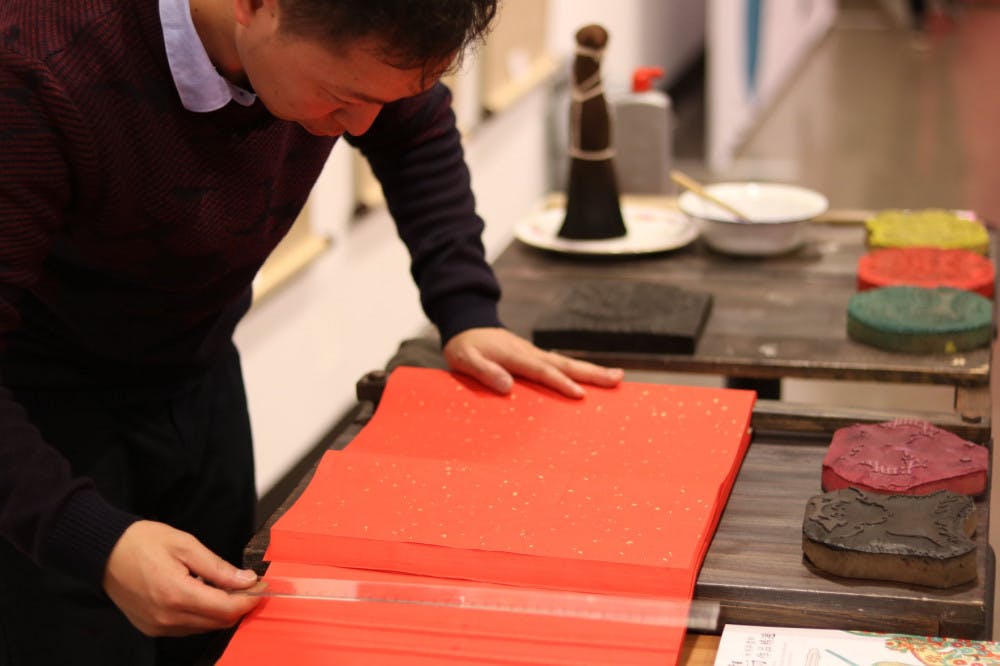Works of Chinese art created by students and professors will be displayed at a Su-Style Chinese artwork exhibition starting Tuesday at the University of Memphis Box Gallery in the Arts and Communication Building.
The exhibition will display modern versions of art created by the ancient Su people.
Hai Huang, deputy president of Suzhou Art and Design Technology Institute in Jiangshu, China, said the purpose of the exhibition is to introduce the culture of the city of Suzhou to American students and teach them how to incorporate it into their lifestyles.
“We want to take this opportunity to further enhance the communication between Chinese and American art circles,” Huang said. “We want to also establish possible cooperative programs with your school in the fields of art and design. “
Huang said he wants the exhibition to help create more opportunities for his students from China to collaborate with American students.
Lin Zhang, University of Memphis Confucius Institute project coordinator, said she thinks it’s important for U of M students to have a better understanding of other cultures.
“We want students to have a better understanding of traditional and modern Chinese lifestyles,” Zhang said. “They will also appreciate different culture and art works from China.”
Zhang said the exhibition will give students the opportunity to learn about and understand the Su culture as well as help develop artwork exchange between the United States and China.
Zhang also said she strongly encourages students, faculty and friends of the U of M community to come appreciate the art and meet the the artists from China.
In light of the Chinese Lunar New Year approaching, the artists wanted to showcase art styles associated with the holiday. Zhang said the students wanted to demonstrate what ancient art for the Lunar New Year looked like.
“It is around the Chinese Lunar New Year, where in ancient times, the woodblock printing, paper and artwork were used to celebrate the New Year,” Zhang said.
Sonia Gong, director of international affairs at the Suzhou Art and Design Technology Institute, said many art pieces emulate what wealthy Chinese people used to wear.
“Most of the items were only accessible to ‘literati,’” Gong said. “The scholars and the wealthy could only afford them because of the materials made.”
Gong said most of the items were previously used for leisure and amusement of the rich but have recently become affordable to most people today.
“The art of woodblock painting is old and time-consuming,” Gong said. “Going back 600 years, one color would usually take a day to print.”
Gong said there would be an interactive woodblock art exhibit Wednesday from 11:30 a.m. to 2:20 p.m. for students to take home their own less time-consuming art piece.
The exhibition is free to everyone and will be open Tuesday at 10 a.m. in the Arts and Communication Building Box Gallery, North Atrium. Levels one and two and will be closed starting Saturday at 2 p.m.
A student from China begins making a print in the traditional woodblock style typically used in ancient Lunar New Year celebrations. Students will be able to make their own art print during the workshop from 11:30 a.m. - 2:20 p.m. at room 312 in the arts and communication building.
A student from China begins making a print in the traditional woodblock style typically used in ancient Lunar New Year celebrations. Students will be able to make their own art print during the workshop from 11:30 a.m. - 2:20 p.m. at room 312 in the arts and communication building.
A student from China begins making a print in the traditional woodblock style typically used in ancient Lunar New Year celebrations. Students will be able to make their own art print during the workshop from 11:30 a.m. - 2:20 p.m. at room 312 in the arts and communication building.
A student from China begins making a print in the traditional woodblock style typically used in ancient Lunar New Year celebrations. Students will be able to make their own art print during the workshop from 11:30 a.m. - 2:20 p.m. at room 312 in the arts and communication building.






